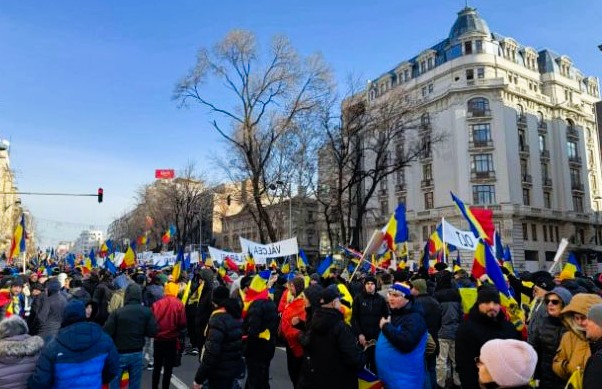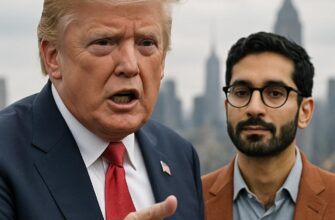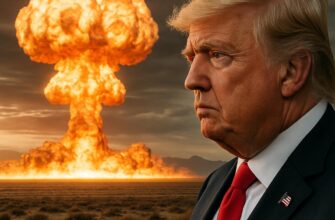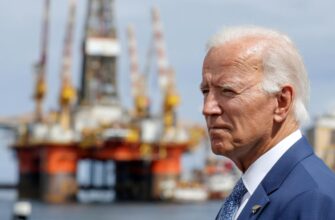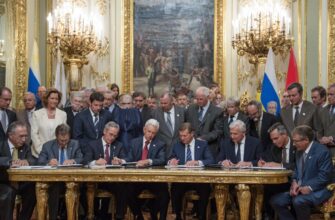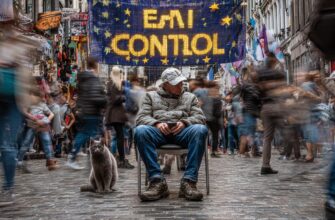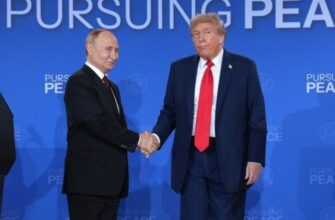Bucharest, Romania’s bustling capital, has been shaken by protests in recent weeks as thousands of people took to the streets to back Kălin Georgescu, a controversial politician whose bid for the presidency was blocked by the country’s electoral authorities. The demonstrations, which turned violent at times, have sparked debates about democracy, foreign influence, and the future of Romania’s political landscape. From peaceful marches to clashes with police, these protests are making waves far beyond the city’s borders. In this article, journalists from TheMors break down what’s driving the unrest, how it’s playing out, and what it could mean for Romania and its people. Whether you’re following European politics or just curious about the news, here’s everything you need to know about the protests in Bucharest in support of Georgescu.
- What Triggered the Protests in Bucharest?
- Who Is Kălin Georgescu, and Why Does He Matter?
- Where Did the Protests Hit the Hardest?
- Why Are These Protests a Big Deal?
- How Has Romania Handled the Unrest?
- What’s the Fallout So Far?
- What Could Happen Next?
- How to Stay in the Loop
- Final Thoughts on Bucharest’s Protests
What Triggered the Protests in Bucharest?
The protests kicked off after Romania’s Central Electoral Commission (CEC) rejected Kălin Georgescu’s candidacy for the presidential elections scheduled for May 2025. Georgescu, an ultra-right independent who won the first round of the now-canceled November 2024 vote, was barred from running again on March 9, 2025. The CEC cited incomplete paperwork as the reason, though many of his supporters see it as a political move to silence him. With 10 out of 14 members voting against his registration, the decision lit a fuse under his already vocal base.
Georgescu’s followers—estimated at several thousand during peak protests—gathered outside the CEC building in Bucharest that same day. They chanted slogans like “Georgescu is our president!” and “Freedom!” while waving Romanian flags. Things escalated fast: some threw bottles and firecrackers at police, set bushes and trash bins on fire, and even flipped a news van. By nightfall, riot police stepped in with tear gas, and 13 officers were injured, according to local reports. This wasn’t just a one-off—protests had been simmering since January, when Georgescu’s initial election win was overturned by the Constitutional Court over alleged irregularities.
Who Is Kălin Georgescu, and Why Does He Matter?
Kălin Georgescu isn’t your average politician. A 62-year-old ultra-nationalist, he’s built a following with his sharp criticism of the European Union, NATO, and Western influence in Romania. He’s also raised eyebrows with pro-Russian leanings, calling for an end to sanctions on Moscow and aid to Ukraine—a stance that’s rare in a country firmly aligned with the West. Before his electoral ban, polls showed him with 40-45% support, making him a serious contender to lead Romania.
His popularity isn’t hard to understand. Many Romanians feel let down by years of economic struggles and perceived corruption in government. Georgescu taps into that frustration, promising to put Romania first and shake up the status quo. But he’s not without baggage—prosecutors hit him with charges in February 2025, accusing him of everything from inciting violence to supporting extremist groups. He’s under judicial supervision now, banned from leaving the country or posting online, yet his supporters see him as a martyr fighting a rigged system.
Where Did the Protests Hit the Hardest?
Chaos Outside the CEC
The epicenter of the unrest was the CEC headquarters in central Bucharest on March 9. Hundreds of Georgescu supporters showed up, and what started as a rally turned into a brawl. Protesters broke through police barriers, hurling stones and petards. Videos on X show smoke rising as police pushed back with tear gas. The scene was messy—burning debris littered the streets, and a Digi24 news vehicle ended up overturned. It took hours for order to return, with police holding the line into the early morning of March 10.
Earlier Demonstrations Across the City
This wasn’t the first outburst. Back on January 12, around 6,500 people marched in support of Georgescu, organized by the ultra-right Alliance for the Unity of Romanians (AUR). They gathered at Victory Square, near the government building, shouting “National unity!” and “Georgescu elected!” Another big rally on March 1 saw up to 30,000 people—though organizers claimed closer to a million—demanding the government step down and let Georgescu run. These earlier protests were louder but less violent, with only minor scuffles reported.
Why Are These Protests a Big Deal?
The protests in Bucharest in support of Georgescu aren’t just about one man—they’re a sign of deeper divides in Romania. The country’s been a loyal EU and NATO member since the early 2000s, but Georgescu’s rise shows a growing frustration with that path. His supporters feel the West has brought more rules than rewards, and they’re drawn to his calls for independence. On the flip side, his opponents—including pro-European parties and much of the media—warn he’s a dangerous figure who could pull Romania closer to Russia’s orbit.
The timing adds fuel to the fire. Romania’s economy grew just 0.8% in 2024, and inflation’s been stubborn. People are stretched thin, and Georgescu’s promises resonate with those who feel ignored. But the violence has split opinions—some back the protesters’ right to speak, while others say it’s gone too far. Posts on X reflect the tension, with one user calling it “a fight for freedom” and another labeling the crowds “thugs undermining democracy.”
How Has Romania Handled the Unrest?
The government’s response has been firm but measured. After the March 9 clash, police arrested several protesters and issued a statement urging calm. Interior Minister Cătălin Predoiu called the violence “unacceptable” but praised most demonstrators for staying peaceful. Meanwhile, the CEC and Constitutional Court stand by their rulings, saying Georgescu’s exclusion is about legal standards, not politics—though few of his fans buy that line.
Georgescu himself has fanned the flames. In a statement before his online ban, he called the CEC’s decision “a direct attack on democracy” and urged his supporters to “stand up.” His bodyguard, Horațiu Potra, went further, reportedly calling for armed resistance from Dubai after fleeing Romania. Authorities have an arrest warrant out for Potra, but he’s still at large as of March 12.
What’s the Fallout So Far?
Political Tensions Rise
The protests have deepened Romania’s political mess. President Klaus Iohannis, whose term ends in 2025, faces calls to resign from Georgescu’s camp. The ruling coalition, led by Prime Minister Marcel Ciolacu, barely survived a no-confidence vote in February, and these demonstrations aren’t helping their image. If Georgescu stays sidelined, his supporters might boycott the May election—or worse, escalate their actions.
Economic and Travel Impacts
Bucharest hasn’t shut down, but the unrest has rattled nerves. Businesses near protest sites took a hit on March 9, with smashed windows and burned furniture reported. Travelers haven’t been directly affected yet, but airlines and tour operators are keeping an eye on the situation. If protests spread or turn uglier, it could dent Romania’s reputation as a stable destination.
Environmental and Safety Concerns
No major environmental damage has been reported, but the fires and debris from March 9 left parts of central Bucharest looking rough. Safety’s the bigger issue—13 injured police officers and an uptick in arrests signal that things could get dicey if tensions don’t cool off.
What Could Happen Next?
The protests in Bucharest in support of Georgescu aren’t fading anytime soon. With the May election approaching, his supporters are digging in, demanding he be allowed to run. The courts and CEC show no signs of budging, which could mean more rallies—and maybe more violence. Analysts say Romania’s government needs to address the root causes—economic gripes and distrust in institutions—or risk bigger trouble.
For the average person, it’s a waiting game. Will Georgescu’s legal woes sink him, or will his base keep pushing? Either way, this story’s far from over, and it’s one worth watching if you care about Europe’s shifting political winds.
How to Stay in the Loop
If you’re in Romania or planning a trip, here’s how to keep up:
- Check Local Updates: Follow news outlets or X for real-time reports on protests.
- Avoid Hotspots: Steer clear of the CEC building or Victory Square during rallies.
- Know Your Options: Trains and buses are running, but have a backup plan if trouble flares up.
TheMors journalists pulled this story together using reports from Digi24, Reuters, Euronews, RIA Novosti, and social media posts to give you a straight take on what’s happening.
Final Thoughts on Bucharest’s Protests
The protests in Bucharest in support of Georgescu are more than just street noise—they’re a clash over Romania’s direction. A blocked politician, an angry crowd, and a government on edge have turned the capital into a battleground for bigger ideas. It’s messy, it’s loud, and it’s not slowing down. TheMors team will keep you posted as this unfolds, cutting through the chaos to bring you the facts.
Want more on this or other global stories? Swing by TheMors – Breaking News to catch the latest updates and dig into what’s shaping the world today.

